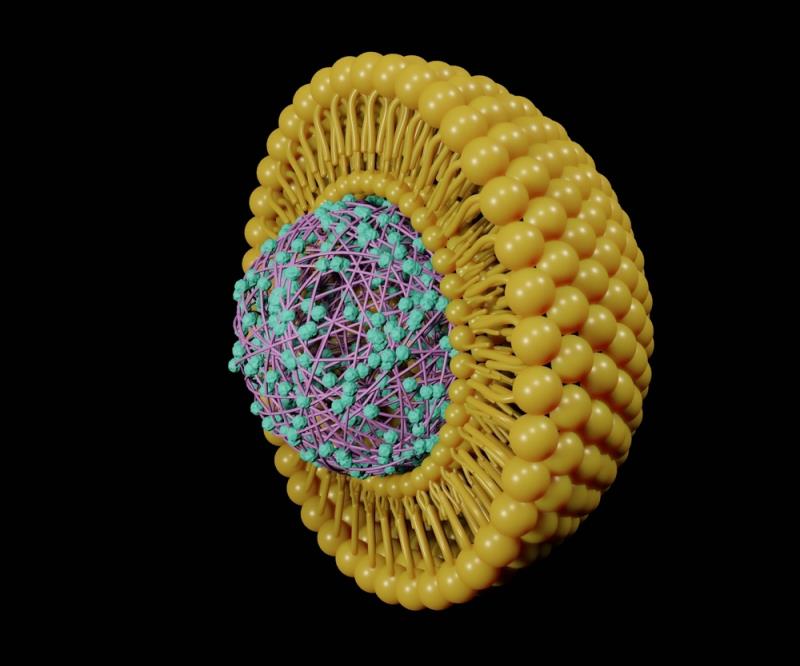Old drugs, new tricks: Repositioning pitavastatin for glioblastoma treatment





Nanostructured lipid carriers (NLCs) delivering pitavastatin demonstrated potential for glioblastoma (GB) treatment in a systematic benchtop study.
A developmental and in vitro study explored a new trick with an old drug involving the design of a pitavastatin-containing lipid nanoparticle (PTNLCs) under the “get it right the first time” quality by design perspective, and compared the cytotoxic effect of the product with blank NLCs (blankNLCs), temozolomide and unencapsulated pitavastatin on GB cell lines in vitro. [Colloids Surf B Biointerfaces 2025;245:114253]
GB is the most common and lethal primary form of malignant brain cancers. Surgical removal of the tumour tissue followed by radiotherapy and concomitant and adjuvant chemotherapy with temozolomide has been the standard clinical approach for many years. However, 2-year survival rate is only 26.5 percent (vs 10.4 percent with radiotherapy alone) with this standard approach, and the 5-year survival rate is only 6.9 percent. [N Engl J Med 2005;352:987-996]
The intrinsic aggressiveness of GB (including the diffuse and infiltrative growth behaviour, tumour heterogeneity, development of resistance to both radiotherapy and alkylating therapies), and the blood-brain barrier (BBB) limiting drug penetration are two major factors that limit the efficacy of standard therapies. [Int J Pharm 2017;531:372-388]
Repositioning of already approved drugs and the development of novel drug delivery systems are part of a worldwide effort to find new and better strategies to treat GB. Drug repositioning relies on identification of new therapeutic indications for approved or abandoned compounds. Pitavastatin, an LDL-cholesterol–lowering drug prescribed worldwide, has shown neuroprotective and anti-inflammatory pleiotropic effects in epilepsy and brain ischaemia. It has also shown promising anticancer activity by increasing cell autophagy and impacting cell proliferation in vitro and in vivo within the framework of GB, but its low aqueous solubility and the reduced BBB permeability impair successful translation to clinical practice. [Cancer 2018;428:173-183; Prog Lipid Res 2021;84:101127; Br J Cancer 2014;111:1562-1571; J Transl Med 2014;12:1-13]
To improve drug delivery across the BBB, lipid nanoparticles were optimized as carriers for the lipophilic drug. The optimized PTNLCs displayed reduced particle size and distribution while increasing pitavastatin’s apparent solubility in terms of drug loading and maintaining colloidal stability over time. Cytotoxicity studies in three GB cell lines further showed that low micromolar concentrations of PTNLCs effectively reduced cell viability to a higher extent than blankNLCs, temozolomide and unencapsulated pitavastatin.
“The development of NLCs was built upon a risk analysis, after establishing the target profile of the product, bearing in mind the product quality, anticancer efficacy and patient safety,” the authors wrote. “Excipient selection was done following several analyses, including drug in lipid solubilities, lipid compatibility (macroscopic and microscopic), molecular docking and principal component analysis. PTNLCs were optimized using a central composite experimental design, with the influence of the solid:liquid lipid ratio, surfactant concentration and homogenization time on the colloidal properties of the carriers being statistically characterized.”
“The results obtained reflect a strong anti-GB activity in concentrations where the standard of care lacks activity, as well as a swift and prominent internalization by GB cells. Overall, this work positions these long-term stable parenteral systems in line with the hypothesis of providing more effective surrogate therapeutics in the field of GB,” they concluded.